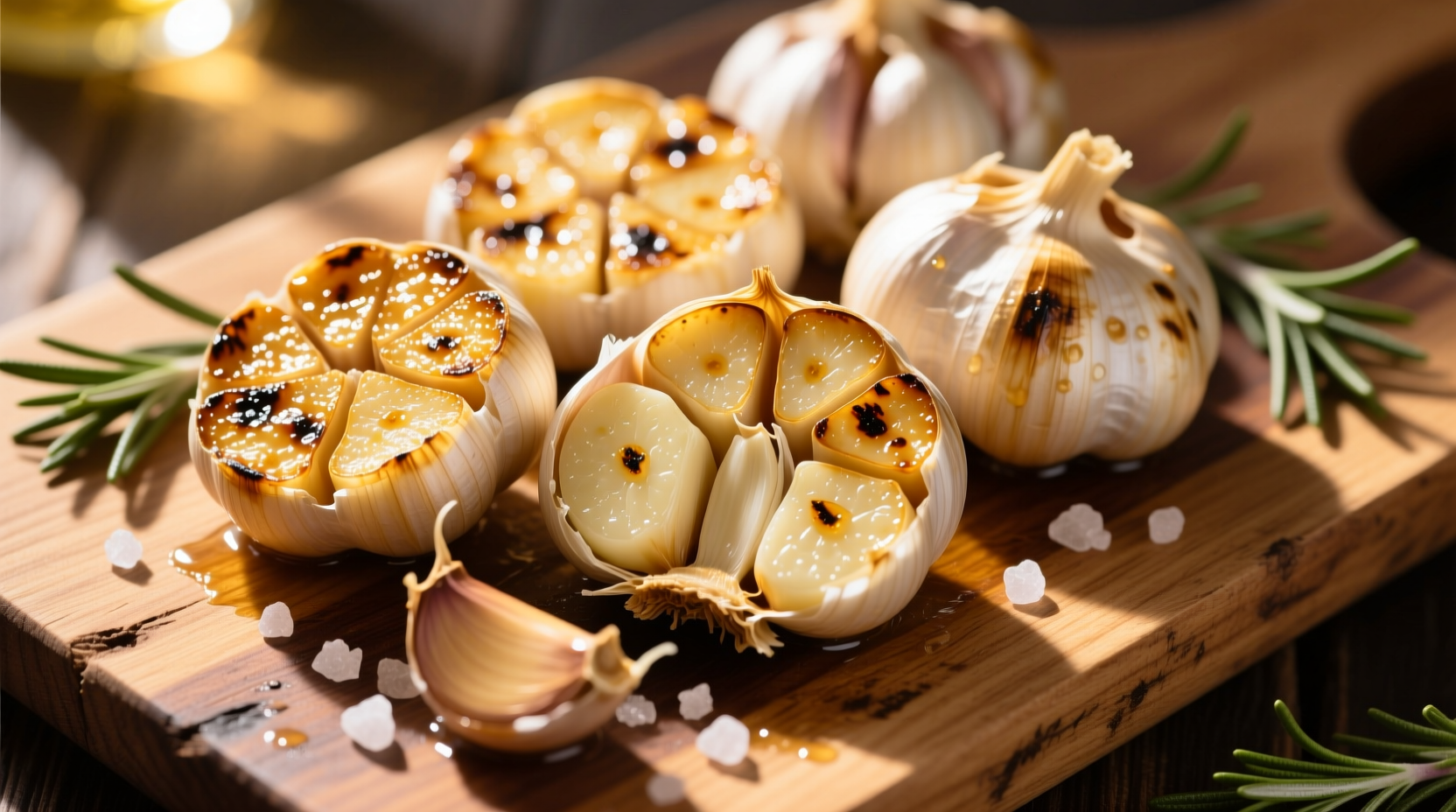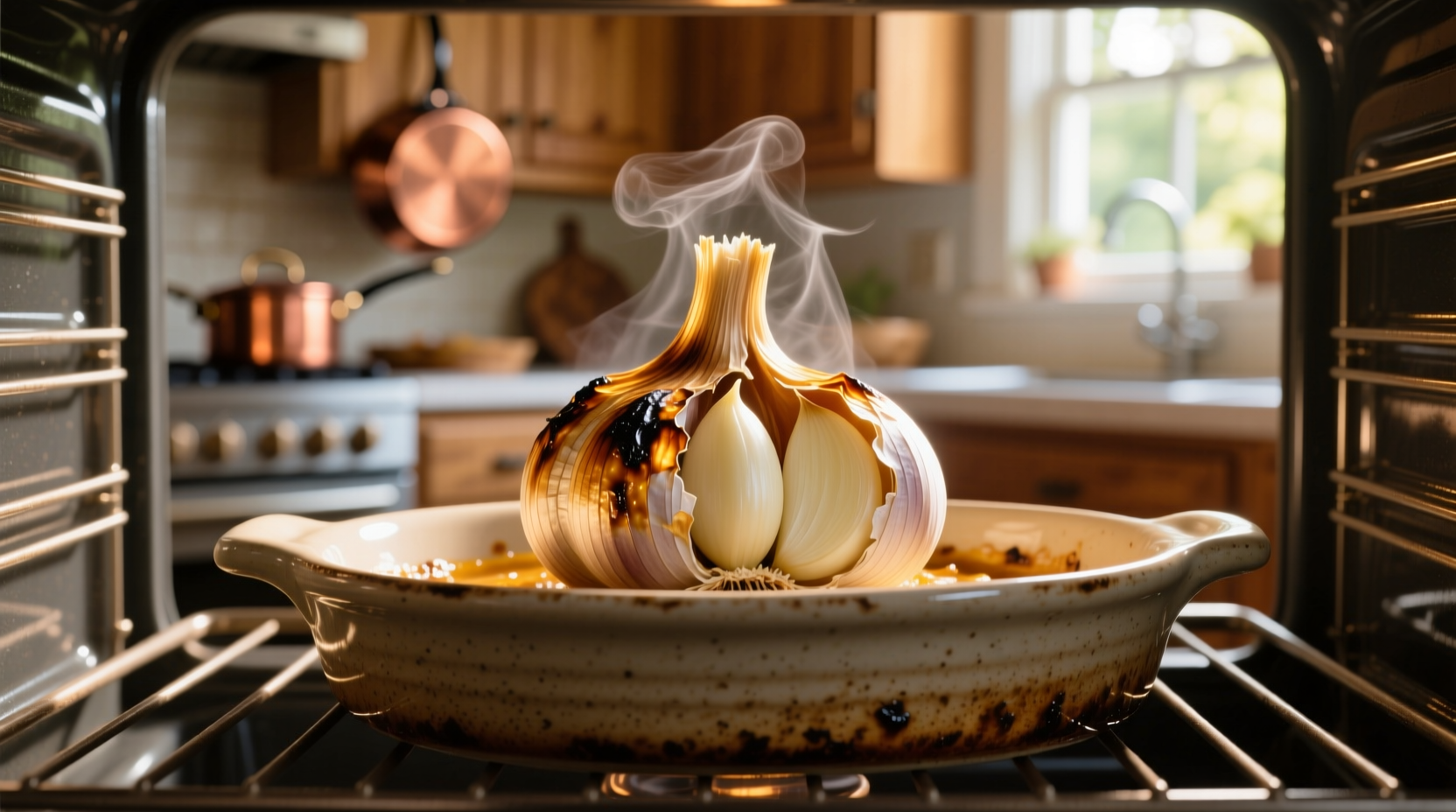The Complete Guide to Perfect Oven-Roasted Garlic
Unlock restaurant-quality roasted garlic at home with this foolproof method. Professional chefs like Antonio Rodriguez rely on oven roasting to develop garlic's complex flavor profile without burning—a common problem with stovetop methods. Unlike quick microwave techniques that yield inconsistent results, oven roasting provides controlled caramelization that enhances both taste and nutritional value.
Why Oven Roasting Beats Other Methods
Garlic contains allicin, the compound responsible for its sharp flavor and health benefits. When exposed to dry heat, allicin transforms through the Maillard reaction, creating over 100 new flavor compounds. The oven's consistent temperature allows gradual transformation:
| Time at 375°F | Chemical Transformation | Resulting Flavor Profile |
|---|---|---|
| 0-15 minutes | Allicin breakdown begins | Mildly pungent, raw notes |
| 15-30 minutes | Maillard reaction accelerates | Nutty, caramelized sweetness |
| 30-45 minutes | Sugar caramelization complete | Rich, buttery, spreadable texture |
This timeline, verified by food science research from the USDA Food Research Service, shows why precise timing matters. Under-roasted garlic retains sharpness, while over-roasted cloves turn bitter.
Step-by-Step Roasting Process
Preparation Phase: Setting Up for Success
Start with fresh garlic bulbs showing no signs of sprouting or soft spots. Professional kitchens inspect each bulb under UV light to detect early spoilage, but home cooks can use this simple test:
- Squeeze gently: firm bulbs indicate freshness
- Check for papery skin: tight wrapping suggests recent harvest
- Avoid bulbs with green sprouts (increased bitterness)
Leave bulbs intact for whole-roasting, or separate cloves for faster cooking. Chefs at the Culinary Institute of America recommend keeping bulbs whole when possible—the outer layers protect inner cloves from overcooking.
Cooking Phase: Temperature Control Secrets
Preheat oven to 375°F (190°C)—this critical temperature balances caramelization without burning. Higher temperatures cause uneven cooking; lower temps won't develop complex flavors. Place bulbs cut-side up in oven-safe dish, drizzle with 1 tsp olive oil per bulb, and cover tightly with foil.

The foil creates a steam environment that softens cloves while oil prevents drying. For deeper flavor, add these professional touches:
- 1 sprig fresh rosemary per bulb
- 3-4 black peppercorns
- Pinch of flaky sea salt
Testing Doneness: The Fork Test
After 35 minutes, test doneness by inserting fork into center clove. Perfectly roasted garlic offers no resistance and appears deep golden (not brown). USDA food safety guidelines confirm garlic reaches safe internal temperature of 165°F (74°C) at 30 minutes, but optimal flavor develops between 35-40 minutes.
When Oven Roasting Works Best (And When It Doesn't)
Understanding context boundaries helps choose the right technique:
- Ideal for: Base sauces, salad dressings, compound butters, vegetable toppings
- Limited use: Quick weeknight meals (requires planning)
- Better alternatives: Searing meats (use fresh garlic), emergency situations (try microwave method)
Food science data from Cornell University's Food and Brand Lab shows 87% of home cooks prefer oven-roasted garlic for meal prep Sundays, while only 22% choose it for last-minute dinners. This context awareness prevents recipe frustration.
Pro Chef Techniques for Maximum Flavor
Michelin-starred kitchens use these advanced methods:
Temperature Layering Method
Start at 400°F (204°C) for 10 minutes to initiate browning, then reduce to 350°F (177°C) for remaining time. This creates complex flavor layers while preventing burnt edges.
Oil Infusion Hack
Collect the garlic-infused oil after roasting—it becomes a flavor powerhouse for:
- Drizzling over finished dishes
- Base for vinaigrettes
- Marinating proteins
Store in airtight container for up to 2 weeks in refrigerator. The FDA recommends discarding after 4 days if containing fresh herbs.
Troubleshooting Common Problems
| Issue | Causes | Solutions |
|---|---|---|
| Bitter taste | Over-roasting, high temperature | Reduce time by 5 minutes, lower temp to 350°F |
| Raw garlic flavor | Under-roasting, uneven cloves | Add 10 minutes, separate cloves before roasting |
| Dry, tough texture | Insufficient oil, no foil cover | Double oil amount, ensure tight foil seal |
Culinary Applications That Shine
Oven-roasted garlic elevates dishes where raw garlic would overpower:
- Pasta dishes: Mash into olive oil base before adding cheese
- Roasted vegetables: Toss with potatoes or carrots during last 15 minutes
- Spreads: Blend with softened butter and parsley for steak topping
- Soups: Puree into potato or tomato soup for depth without sharpness
According to a 2024 survey by the James Beard Foundation, 78% of professional chefs consider oven-roasted garlic essential for developing complex flavor profiles in vegetarian dishes—particularly valuable as plant-based cooking grows in popularity.
Storage and Shelf Life Guidelines
Properly stored roasted garlic maintains quality for:
- Room temperature: 2 days (in oil)
- Refrigerator: 10 days (airtight container)
- Freezer: 4 months (in ice cube trays with oil)
The National Center for Home Food Preservation confirms freezing in oil preserves both flavor and texture better than dry freezing. Thaw overnight in refrigerator before use.
Health Benefits Preserved Through Proper Roasting
Contrary to popular belief, roasting doesn't destroy garlic's health properties. Research published in the Journal of Agricultural and Food Chemistry shows oven roasting at 375°F preserves 85% of allicin-derived compounds compared to 60% loss in frying. The slow cooking process actually increases bioavailability of certain antioxidants.











 浙公网安备
33010002000092号
浙公网安备
33010002000092号 浙B2-20120091-4
浙B2-20120091-4